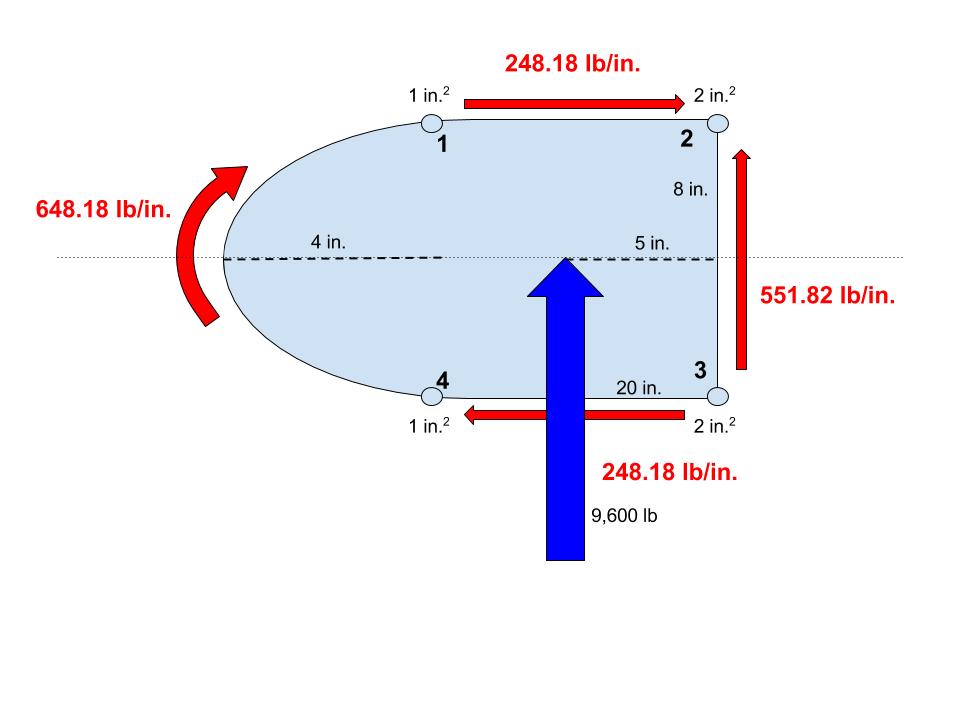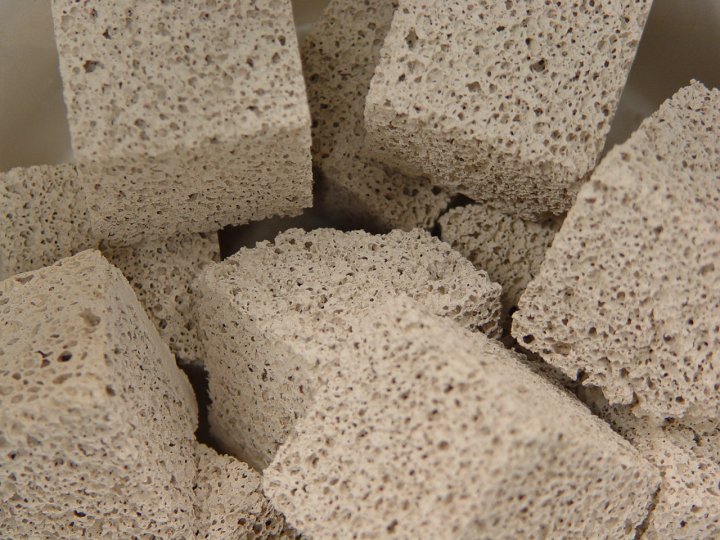|
Taylor Dispersion
Taylor dispersion or Taylor diffusion is an effect in fluid mechanics in which a shear flow can increase the effective diffusivity of a species. Essentially, the shear acts to smear out the concentration distribution in the direction of the flow, enhancing the rate at which it spreads in that direction. The effect is named after the British fluid dynamicist G. I. Taylor, who described the shear-induced dispersion for large Peclet numbers. The analysis was later generalized by Rutherford Aris for arbitrary values of the Peclet number. The dispersion process is sometimes also referred to as the Taylor-Aris dispersion. The canonical example is that of a simple diffusing species in uniform Poiseuille flow through a uniform circular pipe with no-flux boundary conditions. Description We use ''z'' as an axial coordinate and ''r'' as the radial coordinate, and assume axisymmetry. The pipe has radius ''a'', and the fluid velocity is: : \boldsymbol = w\hat = w_0 (1-r^2/a^2) \hat The co ... [...More Info...] [...Related Items...] OR: [Wikipedia] [Google] [Baidu] |
Fluid Mechanics
Fluid mechanics is the branch of physics concerned with the mechanics of fluids (liquids, gases, and plasmas) and the forces on them. It has applications in a wide range of disciplines, including mechanical, aerospace, civil, chemical and biomedical engineering, geophysics, oceanography, meteorology, astrophysics, and biology. It can be divided into fluid statics, the study of fluids at rest; and fluid dynamics, the study of the effect of forces on fluid motion. It is a branch of continuum mechanics, a subject which models matter without using the information that it is made out of atoms; that is, it models matter from a ''macroscopic'' viewpoint rather than from ''microscopic''. Fluid mechanics, especially fluid dynamics, is an active field of research, typically mathematically complex. Many problems are partly or wholly unsolved and are best addressed by numerical methods, typically using computers. A modern discipline, called computational fluid dynamics (CFD), i ... [...More Info...] [...Related Items...] OR: [Wikipedia] [Google] [Baidu] |
Shear Flow
The term shear flow is used in solid mechanics as well as in fluid dynamics. The expression ''shear flow'' is used to indicate: * a shear stress over a distance in a thin-walled structure (in solid mechanics);Higdon, Ohlsen, Stiles and Weese (1960), ''Mechanics of Materials'', article 4-9 (2nd edition), John Wiley & Sons, Inc., New York. Library of Congress CCN 66-25222 * the flow ''induced'' by a force (in a fluid). In solid mechanics For thin-walled profiles, such as that through a beam or semi-monocoque structure, the shear stress distribution through the thickness can be neglected. Furthermore, there is no shear stress in the direction normal to the wall, only parallel. In these instances, it can be useful to express internal shear stress as shear flow, which is found as the shear stress multiplied by the thickness of the section. An equivalent definition for shear flow is the shear force ''V'' per unit length of the perimeter around a thin-walled section. Shear flow has the di ... [...More Info...] [...Related Items...] OR: [Wikipedia] [Google] [Baidu] |
Eddy Diffusion
Eddy diffusion, eddy dispersion, or turbulent diffusion is a process by which substances are mixed in the atmosphere, the ocean or in any fluid system due to eddy motion. In other words, it is mixing that is caused by eddies that can vary in size from subtropical ocean gyres down to the small Kolmogorov microscales. The concept of turbulence or turbulent flow causes eddy diffusion to occur. The theory of eddy diffusion was first developed by Sir Geoffrey Ingram Taylor. In laminar flows, material properties (salt, heat, humidity, aerosols etc.) are mixed by random motion of individual molecules (see molecular diffusion). By a purely probabilistic argument, the net flux of molecules from high concentration area to low concentration area is higher than the flux in the opposite direction. This down-gradient flux equilibrates the concentration profile over time. This phenomenon is called molecular diffusion, and its mathematical aspect is captured by the diffusion equation. In tu ... [...More Info...] [...Related Items...] OR: [Wikipedia] [Google] [Baidu] |
Cambridge University Press
Cambridge University Press is the university press of the University of Cambridge. Granted letters patent by Henry VIII of England, King Henry VIII in 1534, it is the oldest university press in the world. It is also the King's Printer. Cambridge University Press is a department of the University of Cambridge and is both an academic and educational publisher. It became part of Cambridge University Press & Assessment, following a merger with Cambridge Assessment in 2021. With a global sales presence, publishing hubs, and offices in more than 40 Country, countries, it publishes over 50,000 titles by authors from over 100 countries. Its publishing includes more than 380 academic journals, monographs, reference works, school and university textbooks, and English language teaching and learning publications. It also publishes Bibles, runs a bookshop in Cambridge, sells through Amazon, and has a conference venues business in Cambridge at the Pitt Building and the Sir Geoffrey Cass Spo ... [...More Info...] [...Related Items...] OR: [Wikipedia] [Google] [Baidu] |
Geoffrey Ingram Taylor
Sir Geoffrey Ingram Taylor OM FRS FRSE (7 March 1886 – 27 June 1975) was a British physicist and mathematician, and a major figure in fluid dynamics and wave theory. His biographer and one-time student, George Batchelor, described him as "one of the most notable scientists of this (the 20th) century". Early life and education Taylor was born in St. John's Wood, London. His father, Edward Ingram Taylor, was an artist, and his mother, Margaret Boole, came from a family of mathematicians (his aunt was Alicia Boole Stott and his grandfather was George Boole). As a child he was fascinated by science after attending the Royal Institution Christmas Lectures, and performed experiments using paint rollers and sticky-tape. Taylor read mathematics and physics at Trinity College, Cambridge from 1905 to 1908. Then he obtained a scholarship to continue at Cambridge under J. J. Thomson. Career and research To students of physics, Taylor is best known for his very first paper, publish ... [...More Info...] [...Related Items...] OR: [Wikipedia] [Google] [Baidu] |
Rutherford Aris
Rutherford "Gus" Aris (September 15, 1929 – November 2, 2005) was a chemical engineer, control theorist, applied mathematician, and a Regents Professor Emeritus of Chemical Engineering at the University of Minnesota (1958–2005). Early life Aris was born in Bournemouth, England, to Algernon Aris and Janet (Elford). From a young age, Aris was interested in chemistry. Aris's father owned a photo-finishing works, where he would experiment with chemicals and reactions. He attended St Martin's, a small local kindergarten and moved to St Wulfran's, a local preparatory school, now Queen Elizabeth's School. Here, he studied Latin (a skill he would make much use of later in his life) and was encouraged to continue pursuing his interest in chemistry. Because of his achievements, he was referred to the Reverend C. B. Canning, Headmaster of Canford School, a well-known public school, close to Wimborne. On the strength of this interview, he was given a place in the newly created h ... [...More Info...] [...Related Items...] OR: [Wikipedia] [Google] [Baidu] |
Poiseuille Flow
The poiseuille (symbol Pl) has been proposed as a derived SI unit of dynamic viscosity, named after the French physicist Jean Léonard Marie Poiseuille (1797–1869). In practice the unit has never been widely accepted and most international standards bodies do not include the poiseuille in their list of units. The third edition of the IUPAC Green Book, for example, lists Pa⋅s ( pascal- second) as the SI-unit for dynamic viscosity, and does not mention the poiseuille. The equivalent CGS unit, the poise Poise may mean: * Poise (unit), a measure of viscosity * A concept similar to gracefulness * Ferdinand Poise image:Ferdinand Poise 1892.jpg, Jean Alexandre Ferdinand Poise (3 June 1828 – 13 May 1892) was a French composer, mainly of opéra ..., symbol P, is most widely used when reporting viscosity measurements. :1\ \text = 1\ \text\text = 1 \text/\text\text = 1 \text\text/\text^ = 10\ \text\text/\text^ = 10\ \text Liquid water has a viscosity of at at a press ... [...More Info...] [...Related Items...] OR: [Wikipedia] [Google] [Baidu] |
Concentration
In chemistry, concentration is the abundance of a constituent divided by the total volume of a mixture. Several types of mathematical description can be distinguished: '' mass concentration'', '' molar concentration'', '' number concentration'', and '' volume concentration''. The concentration can refer to any kind of chemical mixture, but most frequently refers to solutes and solvents in solutions. The molar (amount) concentration has variants, such as normal concentration and osmotic concentration. Etymology The term concentration comes from the word concentrate, from the French , from con– + center, meaning “to put at the center”. Qualitative description Often in informal, non-technical language, concentration is described in a qualitative way, through the use of adjectives such as "dilute" for solutions of relatively low concentration and "concentrated" for solutions of relatively high concentration. To concentrate a solution, one must add more solute (for examp ... [...More Info...] [...Related Items...] OR: [Wikipedia] [Google] [Baidu] |
Péclet Number
In continuum mechanics, the Péclet number (, after Jean Claude Eugène Péclet) is a class of dimensionless numbers relevant in the study of transport phenomena in a continuum. It is defined to be the ratio of the rate of advection of a physical quantity by the flow to the rate of diffusion of the same quantity driven by an appropriate gradient. In the context of species or mass transfer, the Péclet number is the product of the Reynolds number and the Schmidt number (). In the context of the thermal fluids, the thermal Péclet number is equivalent to the product of the Reynolds number and the Prandtl number (). The Péclet number is defined as: : \mathrm = \dfrac For mass transfer, it is defined as: :\mathrm_L = \frac = \mathrm_L \, \mathrm Such ratio can also be re-written in terms of times, as a ratio between the characteristic temporal intervals of the system: :\mathrm_L = \frac = \frac = \frac For \mathrm \gg 1 the diffusion happens in a much longer time compared to t ... [...More Info...] [...Related Items...] OR: [Wikipedia] [Google] [Baidu] |
Porous Medium
A porous medium or a porous material is a material containing pores (voids). The skeletal portion of the material is often called the "matrix" or "frame". The pores are typically filled with a fluid (liquid or gas). The skeletal material is usually a solid, but structures like foams are often also usefully analyzed using concept of porous media. A porous medium is most often characterised by its porosity. Other properties of the medium (e.g. permeability, tensile strength, electrical conductivity, tortuosity) can sometimes be derived from the respective properties of its constituents (solid matrix and fluid) and the media porosity and pores structure, but such a derivation is usually complex. Even the concept of porosity is only straightforward for a poroelastic medium. Often both the solid matrix and the pore network (also known as the pore space) are continuous, so as to form two interpenetrating continua such as in a sponge. However, there is also a concept of closed p ... [...More Info...] [...Related Items...] OR: [Wikipedia] [Google] [Baidu] |



